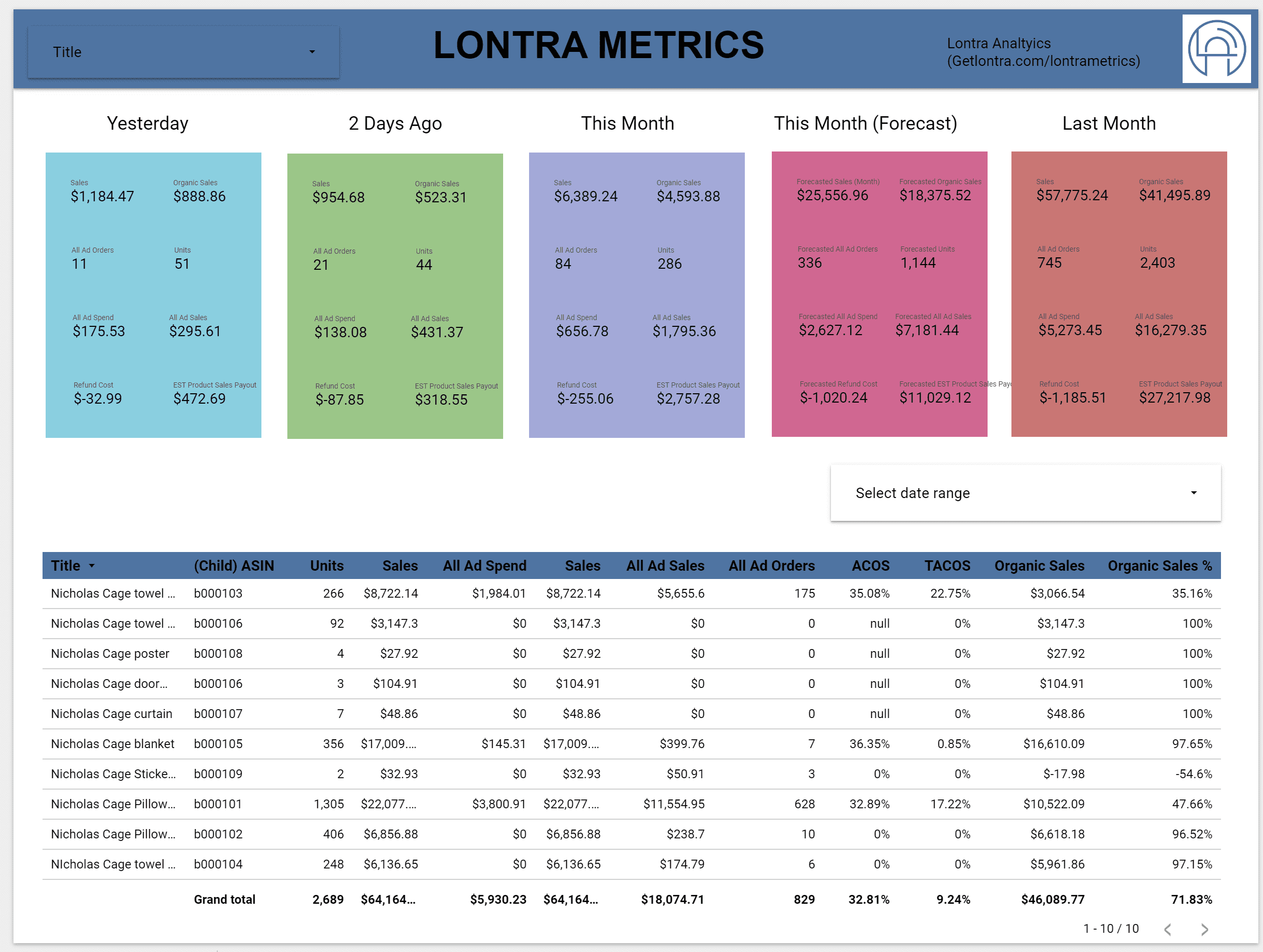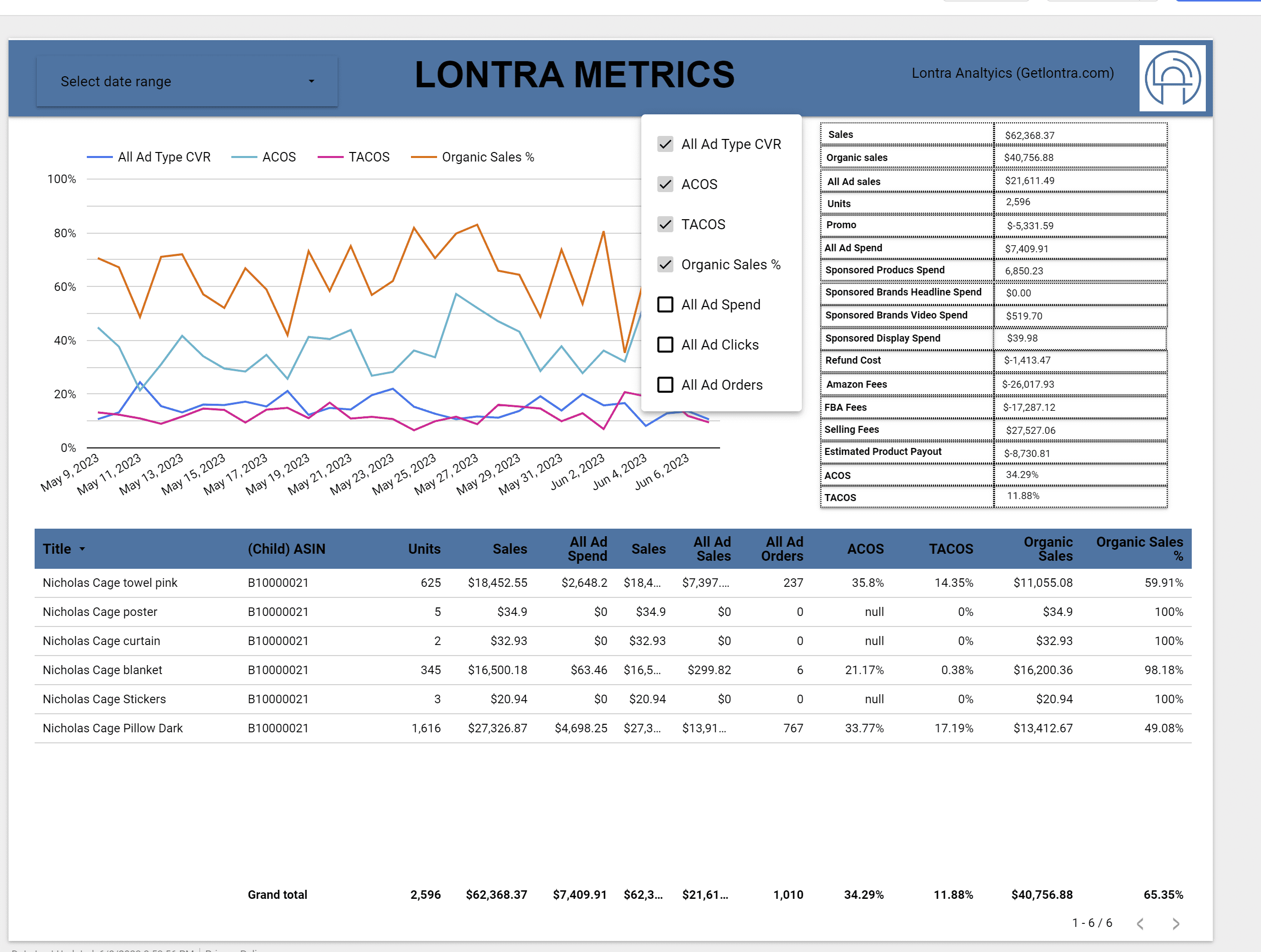by Sean Stone • Last updated June 6, 2023
Bonus Material: Free Amazon Analytics Dashboard Here – Lontra Metrics
Today I’m going to show you exactly how to build an Amazon Analytics Dashboard that you and your team will love using, entirely for free.
In fact, it’s the exact same one I’ve used to plan and manage multi-million dollar Amazon Accounts.
We have a video tutorial just below the image below, so scroll down if you prefer to watch video!
Disclosures:

How do we maximize the profitability of our Amazon Accounts? Well, we focus on the most profitable kinds of sales, and maximizing those.
What are the most profitable sales you can make? Organic Sales!
They’re also notoriously difficult to track, so we built a tool to track them easily and efficiently!
Grab a copy below.
Do you want to track and optimize your Amazon sales using data? Do you wish you could see all the metrics that matter to your business in one place? Do you want to save time and money by using a free dashboard that works with Google Data Studio and Google Sheets?
If you answered yes to any of these questions, then you’re in luck. We have created a free dashboard that gives you all the features you need to grow your Amazon business using data. It’s called Lontra Metrics, and it’s the ultimate dashboard for Amazon sellers.
In this article, we’ll show you how to use Lontra Metrics to compare organic and PPC sales, monitor conversion rate, evaluate product performance, and more. We’ll also show you how to get the dashboard for free and how to connect it to your Amazon data.

Getting Lontra Metrics is easy. All you need is a Google account and an Amazon account. Here are the steps:

Get Started
Sponsored Products Advertised products:
Sponsored Products Purchased products:
Sponsored Display Advertised products:
Sponsored Display Purchased products:
Sponsored Brands Bulk Operations:
Sponsored Brands Attributed Purchases:
Generate and download the report.
Sponsored Brands Campaign Report:
Business Reports by ASIN:
Get Date Range Reports Data
Paste all of these reports into the corresponding Tabs in the Excel file
Run the “Copy Formulas Down” Macro
Run the “CopyPasteLoop” Macro
Run the “CopyFormulasInMacroTable” Macro
Final Step: Put the new Macro table in a Google sheet
Connect the data to your dashboard
Congratulations! You now have Lontra Metrics to play with!
Shameless Promotion from Lontra
Learn more about our completely customizable software that we use to analyze and grow large Amazon Accounts in record time, without coding.
Enter your email address to register to our newsletter subscription!